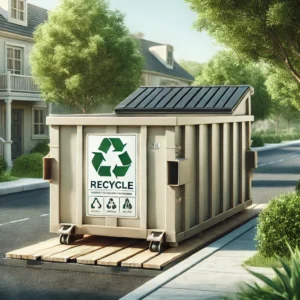
Recycling dropoffcenters play a crucial role in promoting sustainable waste management practices. These facilities provide a convenient and effective way for individuals to dispose of recyclables safely, reducing landfill waste and supporting environmental health. Understanding how to locate these centers and what materials they accept can empower community members to contribute meaningfully to recycling efforts.
Many cities have established drop-off locations to accommodate residents who may not have curbside recycling services. These centers often accept a wide variety of materials, from plastics to glass and metal, making it easier for people to recycle items that might otherwise go to waste. Indexes or maps usually guide users to the nearest centers, ensuring that everyone has access to recycling opportunities.
In addition to providing practical recycling options, drop-off centers often host community events that educate the public about recyclable materials and responsible disposal practices. Engaging with local recycling resources fosters a stronger commitment to sustainability and inspires collective action toward a greener future.
Understanding Recycling Drop-Off
Recycling drop-off centers serve as convenient locations for individuals to dispose of recyclable materials. These centers play a crucial role in promoting sustainability and ensuring proper waste management.
Benefits of Recycling Drop-Off Centers
Recycling drop-off centers offer several advantages. They provide accessible locations for community members to recycle items that cannot be placed in curbside bins. This convenience encourages higher participation rates in recycling programs.
Additionally, drop-off centers can handle a wider variety of materials, including electronics and hazardous waste. This reduces the likelihood of contamination in regular recycling streams. By ensuring proper recycling practices, these centers help conserve natural resources and reduce landfill waste.
Types of Recyclable Materials
Recycling drop-off centers accept numerous materials. Common items include:
- Plastics: Bottles, containers, and bags.
- Metals: Aluminum cans, tin cans, and scrap metal.
- Paper: Newspapers, cardboard, and office paper.
- Glass: Bottles and jars.
Some centers also process specific materials, such as electronics, batteries, and light bulbs. Knowing which materials are accepted helps individuals recycle properly and prevents contamination.
The Recycling Drop-Off Process
The recycling drop-off process is straightforward. Upon arrival at a drop-off center, individuals usually find designated areas for different materials. It is crucial to sort items according to the provided guidelines.
After sorting, individuals deposit their recyclables into the appropriate bins. Staff may be available to assist with any questions. Lastly, the facility handles the materials, transporting them to recycling facilities for processing. This structured approach ensures efficient recycling and minimizes environmental impact.
Locating Recycling Drop-Off Facilities
Finding recycling drop-off facilities can simplify the recycling process. It is essential to understand how to locate these sites, what their hours are, and any guidelines or restrictions associated with them.
How to Find Local Drop-Off Sites
To locate local recycling drop-off sites, individuals can utilize several resources. Most cities have official websites that provide a list of recycling centers and drop-off locations. Utilizing search engines with terms like “recycling drop-off near me” can yield quick results.
Additionally, community forums and social media groups often share updated information about drop-off events and temporary sites. Many municipalities also partner with environmental organizations to promote their recycling programs. Local libraries or community centers may have printed resources available as well.
Hours of Operation and Accessibility
Knowing the hours of operation is crucial for planning a visit to a drop-off facility. Many recycling centers have specific days and times when they accept materials. Some may operate only on weekdays, while others might offer extended hours on weekends.
Accessibility is another important factor. Facilities should ideally be located in areas that are easy to reach for individuals with varying transportation options. Users should check for features like drive-up access or nearby public transportation routes.
Guidelines and Restrictions
Recycling drop-off sites often have specific guidelines regarding what can and cannot be accepted. Common recyclable materials include paper, cardboard, glass, and certain plastics. However, items like electronics or hazardous waste may require different handling procedures.
It is advisable for individuals to consult their local facilities’ websites or contact them directly to confirm guidelines. Following these restrictions helps ensure the efficiency of the recycling process and maintains the integrity of materials collected.
BVI Companies Explained: Essential Insights and Benefits
The British Virgin Islands (BVI) is a prominent jurisdiction for company incorporation, kn…




